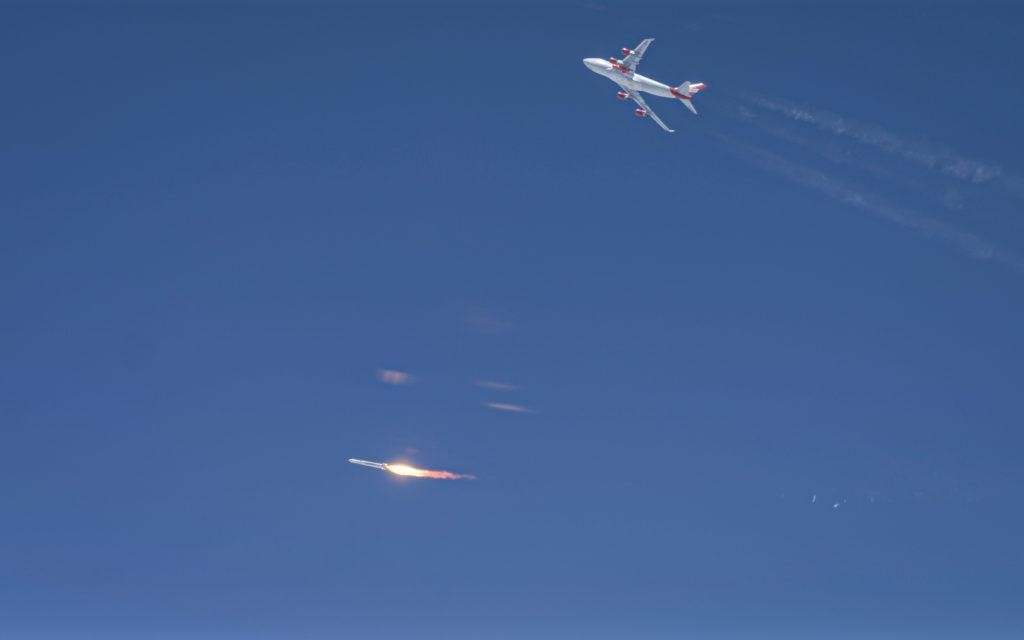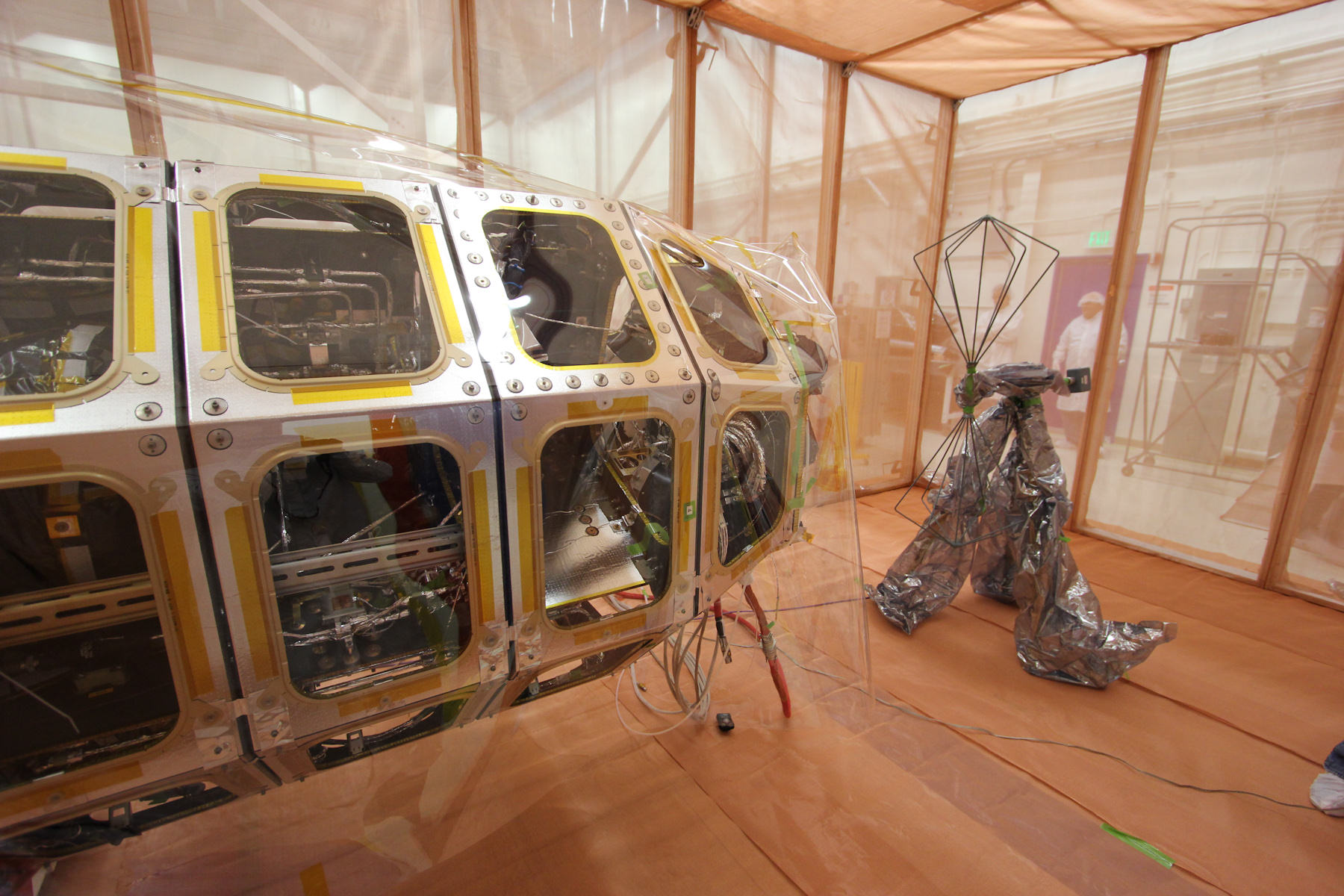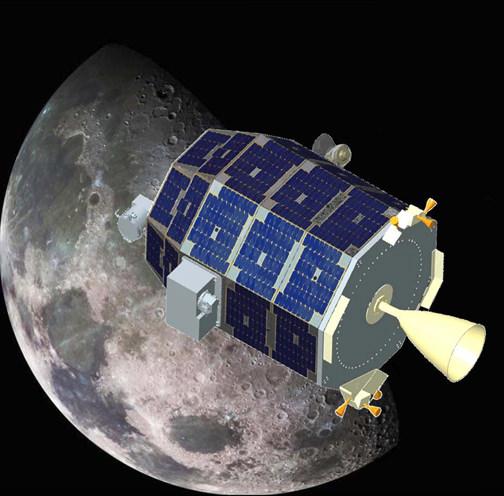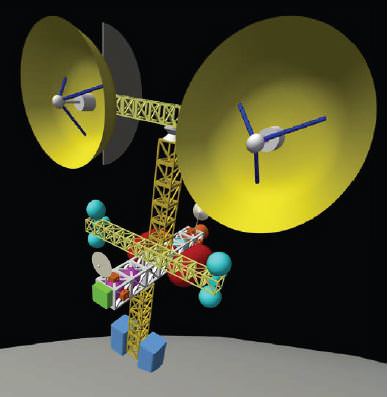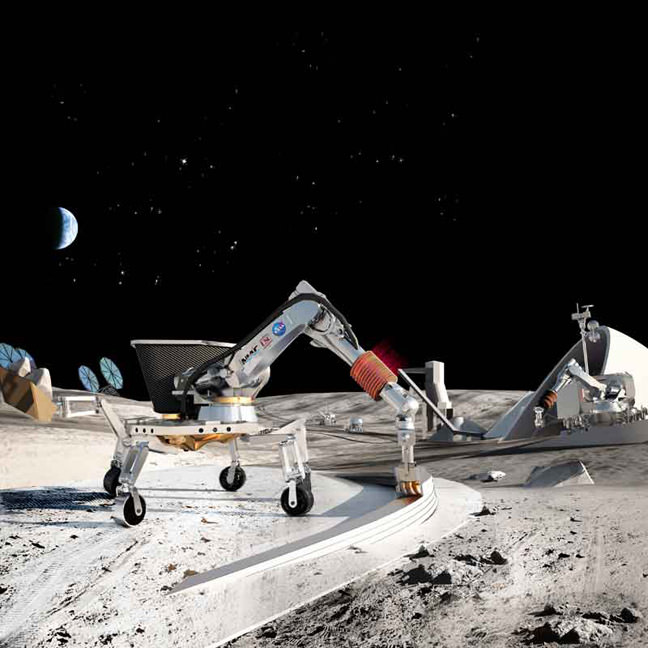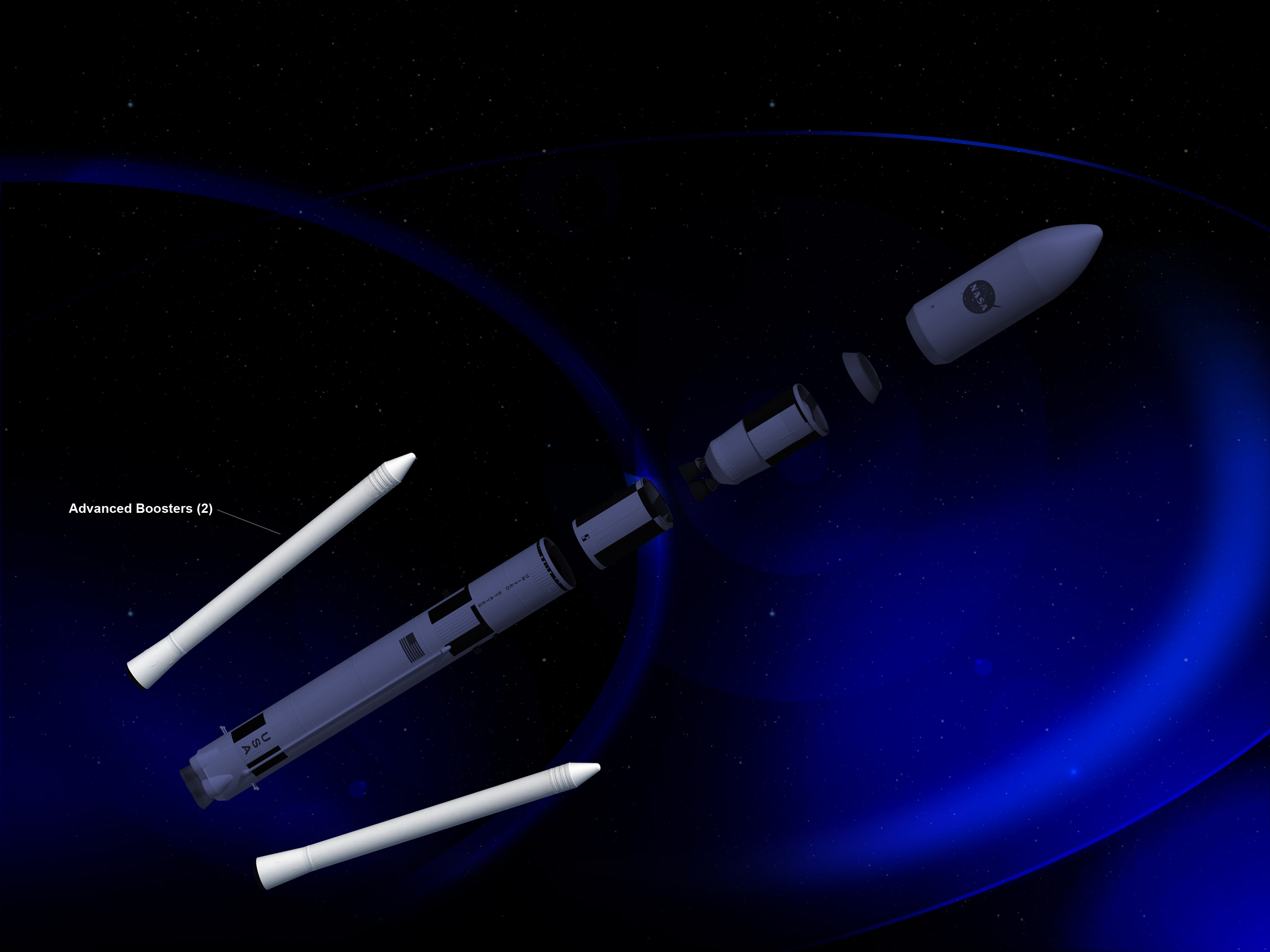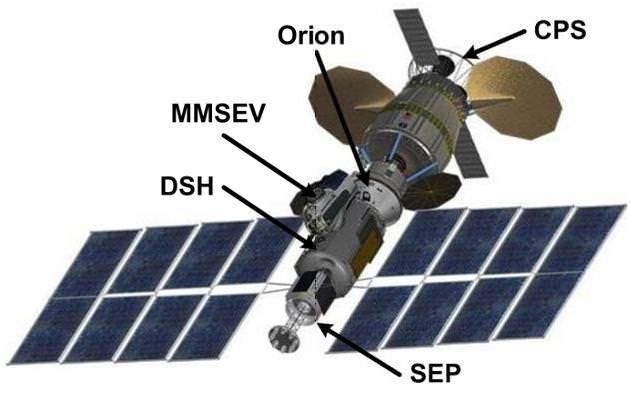The reason people use the aphorism “it isn’t rocket science” is because rocket science is hard. Virgin Orbit, a spin-off of Virgin Galactic that focuses on small satellite launches, proved that with a recent test of its LauncherOne rocket.
Continue reading “Virgin Orbit’s first air-launched rocket launch fails”NASA Looks Towards Next Mission to the Moon
NASA’s Lunar Atmosphere and Dust Environment Explorer (LADEE) Observatory sits beside a radio frequency antenna inside an enclosure that blocks external static to detect electromagnetic emissions. Image credit: NASA Ames
With the GRAIL mission ending today, NASA is preparing for its next lunar orbiter mission, which could help pave the way for a potential future human mission to the Moon. While the Moon seems to be an ‘on-again-off-again’ potential human destination, as the GRAIL mission points out, studies of our closest neighbor in space continues to reveal surprises.
But if we are ever going to establish any sort of long-term presence on the Moon, scientists and engineers will have to understand more about the environmental conditions that they’re dealing with. Lunar dust is an environmental factor that requires much more exploration and study, as it may pose one of the biggest problems for humans on the Moon. Lunar dust is as fine as talcum powder and abrasive enough to cause long term problems to the lenses and seals central to the operation of mechanical equipment — not to mention hazards to human health — during any lengthy stay on the Moon.
Artist concept of the LADEE spacecraft in orbit at the Moon. Credit: NASA
To study this unique lunar environmental phenomenon, NASA is in the process of testing the Lunar Atmosphere and Dust Environment Explorer (LADEE) in preparations for its upcoming launch. Recently, LADEE integrated the last of its three main science instruments. The three instruments to be launched with the craft are the Ultraviolet and Visible Light Spectrometer, which will analyze the light signatures of the materials it detects on the Moon, the Neutral Mass Spectrometer, set to detect differences in what little atmosphere there is on the Moon over multiple orbits, and the Lunar Dust Experiment, which will collect and analyze any dust particles that are floating around the sparse atmosphere that LADEE will be flying in.
In addition to it’s science experiments, LADEE will be technically unique in a few ways. First, it is pioneering NASA’s Modular Common Bus architecture, which will hopefully increase the compatibility between future lunar spacecraft’s communications and power systems and thereby decrease their cost.
LADEE will also carry a “technology demonstration payload,” which will allow it to communicate with Earth using lasers rather than radio waves. This will dramatically increase the speed of information transfer between the spacecraft and its controllers, resulting in almost broadband-internet levels of data exchange. If this technology proves successful it is likely to be used on future lunar exploration missions as well.
LADEE is currently undergoing a battery of environmental tests. Acoustic, vibration, shock and thermal-vacuum test still await the spacecraft after it recently passed the electromagnetic interference test. Assuming it manages to keep its clean bill of health, the spacecraft could be launched on it’s 160 day mission as early as August 2013. With its help, humanity will have a better understanding of how to combat one of the most unfriendly aspects of the lunar environment.
Study Looks at Making Asteroid Mining Viable
Artist concept of the Robotic Asteroid Prospector. Credit: Marc Cohen et al.
There’s been a lot of buzz in the media lately about mining asteroids, largely brought on by the introduction of Planetary Resources, Peter Diamandis’ new venture into the industry. But is this business proposition actually viable? NASA’s Innovative Advanced Concepts is funding a study that hopes to answer that question.
Called the Robotic Asteroid Prospector proposal, the project is part of the NIAC’s Phase I program awardees. It is headed by Dr. Marc Cohen, an architect based in Palo Alto California, with help from Warren James, a trajectory expert, Kris Zacny, a roboticist at Honeybee Robotics and Brad Blair, a mineral economist. Their proposal studies the fundamentals of some major questions facing the asteroid mining industry. What kinds of mission and spacecraft design are necessary? Is the right kind of mining technology available? And most importantly, is there even a viable business model for doing it in the first place?
Dr. Cohen himself is skeptical that there is, but points out that’s part of the reason he’s so interested in performing the research. Contributing to his skepticism are the numerous assumptions the proposal is based on. These include a telescope in Venus orbit to help the search for near-Earth objects (one of NASA’s primary mission statements, and similar to the B612 Foundation’s space telescope that will hunt for Near Earth Asteroids) and regular commercial access to a service base located in a Lagrange point from which to launch the missions.
“We’re trying to make the assumptions really clear, specific and explicit, so we understand what the trade-offs are,” Dr. Cohen told Universe Today. “One thing we’re being very careful about is not going in with any preconceptions.”
The assumptions lead to a spacecraft design, possibly using a solar-thermal propulsion system, that launches to a NEO from the Lagrange point station, mines and processes the material at the asteroid and then returns it to the Lagrange point for shipment back to Earth.
Dr. Cohen explained that the team is trying to find the requirements that would make a robotic asteroid program commercially successful.
There are still plenty of challenges to solve, including developing trajectories that allow the spacecraft to make repeated, short trips to the asteroid it is mining and handling any sort of technical problems without a human presence nearby. If it manages to resolve some of those difficulties, the project could result in the outlines of one of the backbones of the future space economy. It might also attract funding for the Phase II round of funding from NIAC next year.
For more information about the RAP, see the NIAC website
NASA Looking at Dozens of Advanced Technology Concepts
The Contour Crafting Simulation Plan for Lunar Settlement Infrastructure Build-Up, a NIAC-supported concept.
Rendering courtesy of Behnaz Farahi and Connor Wingfield
All the media focus surrounding the recent landing of NASA’S rover Curiosity has brought increased attention to space technology. Just in time to bask in the limelight, NASA has delivered a tech enthusiast’s dream in terms of astounding new concepts that have recently been funded. They range in scope from nanosatellite technology to the exploration under the ice of Europa.
NASA’s Innovative and Advanced Concepts program announced on August 1st that it has funded 28 studies for the upcoming year. Eighteen of the studies are considered “Phase 1” projects, while ten are considered “Phase 2.”
Phase 1 projects are the new, innovative ideas that NASA received during its call for proposals. Some other conepts include an air purification system with no moving parts, and a system that could use in situ lunar regolith to autonomously build concrete structures on the Moon, as pictured above. Each of the winning proposals, from a pool of hundreds, will receive $100,000 to pursue the idea further. Each team will report back to NIAC at the end of the year with a report on their progress toward the goals of the project that were laid out in the proposal.
Phase 2 projects are pulled from the successful proposals from last year that reapplied for another grant. These projects have already made it through their Phase 1 development and will receive $500,000 for continuing research into the concept. These projects include such technologies as fusion-driven rockets and printable space-craft, and could move on to commercial or mission development if they successfully complete their Phase 2 goals. Other parts of NASA’s Office of the Chief Technologist will help support those goals, as the NIAC only supports project up through the completion of Phase 2.
The NIAC ties nicely into NASA’s new focus on the commercial side of space flight. Many of the concepts funded by the program could serve as the basis for viable commercial businesses, such as asteroid mining and robotic construction. But most importantly, NASA is still funding the risky, game-changing projects that could drastically transform the way people live their every-day lives. Tech enthusiasts everywhere should be happy with that concept.
You can see here for a list of the proposals. We’ll try to feature some of these in future articles.
NASA Making Strides with the New Space Launch System
In 2011, America lost the ability to send humans into space when NASA retired the shuttle program. Lately, there has been a burst of news about the commercial side of spaceflight and how private companies such as SpaceX and VirginGalatic will soon be able to take over where the shuttle left off. But that doesn’t mean NASA has given up the ability to send people into space forever and recently the agency has taken a few steps toward regaining that ability.
The Space Launch System (SLS) is NASA’s new platform for launching both humans and cargo into Earth orbit and beyond. With an eventual expected payload capacity of 130 metric tons it will theoretically be the most powerful rocket ever built. On July 25th, it hit a major milestone when it was officially upgraded by an independent review board from the “concept development“ phase of the project to the “preliminary design“ phase.
“The in-depth assessment confirm the basic vehicle concepts of the SLS, allowing the team to move forward and start more detailed engineering design.“ William Gerstenmaier of NASA’s Human Exploration and Operations Mission Directorate said. This puts the system on the path to the next milestone: the preliminary design review expected late next year.
That design review will cover a system that will likely be comprised of two five-stage rocket boosters like those that were used on the space shuttle. Since those boosters were only capable of achieving low-Earth orbit, NASA needed to add some extra power to the SLS in order to reach deep space where many of its missions will take place. Their solution is what is known as an “advanced booster“, essentially a late-stage chemical rocket that will fire well into in the ascent of the craft and carry it out of Earth’s gravity well.
The design process of the advanced boosters hit its own milestone on July 13th when NASA announced it had selected the proposals it will use to begin contract negotiations for the development of the system. This is the first step of NASA’s procurement process, with a possible total contract of $200 million spread between the companies that receive finalized contracts. Those companies will likely come from the pool of those selected in this first step. They include, Aerojet General Corp, ATK Launch Systems Inc, Northrop Grumman Systems Corporation – Aerospace Systems and Dynetics, Inc. Dynetics, based out of Huntsville, Alabama, came out the winner for this round of the contract competition, with three of its proposals moved on to the contract negotiation phase while ATK, Aerojet and Northrop had one each. The names of the proposals are:
– “Subscale Composite Tank Set“ – Northrop Grumman
– “F-1 Engine Risk Reduction Task“ – Aerojet General Corp
– “F-1 Engine Risk Reduction Task“ – Dynetics Inc.
– “Main Propulsion System Risk Reduction Task“ – Dynetics Inc.
– “Structures Risk Reduction Task“ – Dynetics Inc.
– “Integrated Booster Static Test“ – ATK Launch Systems Inc.
The next step of the process will require the awardees to come up with engineering demonstrations and risk reduction concepts for their proposals. Over a 30-month period, the companies will have to demonstrate their technology prior to completion of the competition for contracts in 2015. Engineers at NASA will then have some time to integrate the advanced booster system with the other SLS modules before the first test launch of the entire system in 2017. While NASA might not be able to take humans to the stars for the next few years, they are making strides towards that goal.
Lead image caption: Components of the Space Launch System, highlighting the advanced boosters. Credit: NASA
Design for a Long Duration, Deep Space Mission Habitat
Caption: The integrated vehicle stack for a deep space human mission concept. Credit: NASA
There are all sorts of details to take into consideration when traveling in deep space, such as where to go, what to do, and how to get back. Since starry-eyed dreamers often don’t take into account the practical realities of putting a human into such an environment, steely-eyed engineers are left to decide the gritty details of such a mission, such as how many pairs of socks are needed. Fortunately, NASA employs engineers who are both steely-eyed and starry-eyed, and their work has just produced an interesting report discussing the human side of deep-space exploration.
The paper, written by Michelle Rucker and Shelby Thompson of Johnson Space Center, focuses on the requirements of a ship that will take the first wave of deep-space human explorers to a near Earth asteroid (NEA), hopefully in the near future. The team stressed that they were only looking at very basic requirements and the paper only provides a basis to work from for more specialized teams that will design individual sub-systems.
To develop the basics, the team had to make some assumptions, and these assumptions are revealing for anyone interested in NASA’s future human exploration plans. The team assumed a 380 day round-trip mission to a NEA, crewed by 4 people, with just 30 days of the mission spent at the asteroid. They assumed the availability of a variety of mission-specific vehicles as well as the ability to perform extra-vehicular activities and dock with the Orion crew module, still under development at NASA. Nevertheless, such assumptions could lead to an exciting mission if they hold throughout the design process.
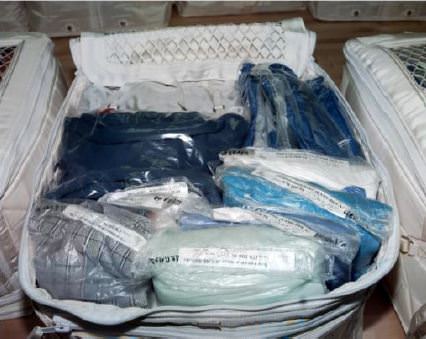
Caption: Two weeks worth of clothing in a crew transport bag. Credit: NASA
In addition to the assumptions, the team took advantage of knowledge gained from years of working on the International Space Station, and helped in considering details like how many packets of powdered drinks are needed for the duration of the trip as well as how much toothpaste a person uses daily in space. All of these numbers were crunched to derive overall dimensions for the craft.
Although, the sum of these volumes produced an over-sized spacecraft, the team evaluated activity frequency and duration to identify functions that could share a common volume without conflict, reducing the total volume by 24%. After adding 10% for growth, the resulting functional pressurized volume was calculated to be a minimum of 268 cu m (9,464 cu ft) distributed over the functions.
Those dimensions resulted in a 4 story structure totaling almost 280 cubic meters (10,000 cubic feet) of pressurized space that looks like it could have come right off the set of Prometheus.
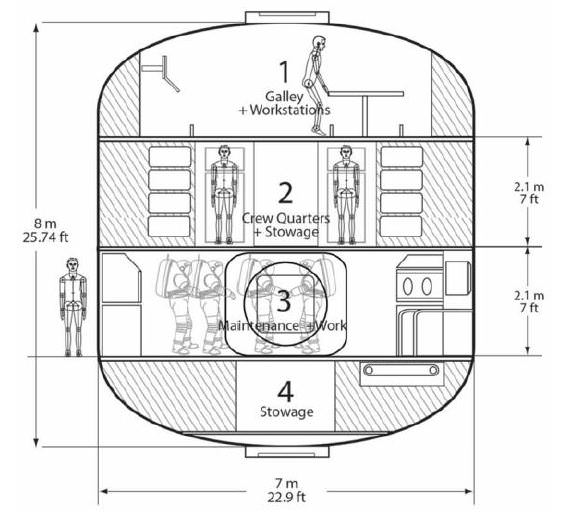
Caption: Conceptual Deep Space Habitat layout. Credit: NASA/Michelle Rucker and Shelby Thompson.
The various subsystems can be broken into seven different categories. The largest is the equipment section, which takes up 22% of the spacecraft. This space would include things like the environmental control panel and navigation and communications equipment. However, the designers thought that the propulsion system, most likely a solar electric propulsion system, and all required control equipment would be part of an attachable module and would not make up part of the main living space of the habitat.
Mission Operations and Spacecraft Operations make up the next largest chunks of the habitable space, each clocking in at 20%. These areas are reserved for mission specific tasks that are not yet defined and general tasks that are necessary no matter what type of mission the habitat is launched on, such as basic maintenance and repair.
Much consideration was given to the psychological and privacy needs of the inhabitants of the ship and as such about 30% of the total habitable space is devoted to the care of the people on board, with 18% going to “individual” care and 12% going to “group” care.
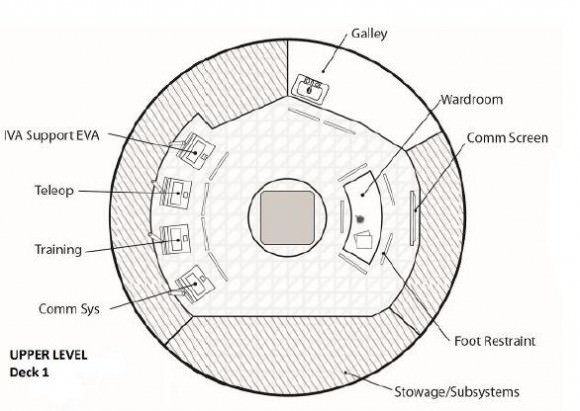
Caption: Group living and operations area of a conceptual deep space habitat module. Credit: NASA/Michelle Rucker and Shelby Thompson.
Individual care includes basics such as beds, full body cleansing and toilets. Group care is more for multi-person activities, such as a dining hall, food prep and meeting areas. The last 2% of the area on board was allotted to “contingency” planning. It fits its namesake well, as the design team hopes never to have to use the space whose primary purpose is to deal with cabin depressurization, crew fatality or other unforeseeable disaster. There is also a shielded area in the interior of the habitat for refuge for the crew during a solar radiation event.
With the basics laid out, it is now up to the specialist teams to develop the next set of requirements for the sub-systems. The final design will only be completed after a long and iterative process of calculation and re-calculation, design and re-design. Assuming the teams persevere, and the space agency receives adequate funding for developing a deep space mission to an asteroid, NASA’s detail-oriented engineers will have developed a very flexible habitat module to use on the next step of human space exploration that dreamers everywhere can get excited about.
Source: NASA Technical Report: Developing a Habitat for Long Duration, Deep Space Mission
Andy Tomaswick, an electrical engineer who follows space science and technology.
Terrestrial Planets Could be More Common Than Gas Giants

Editor’s note: This guest post was written by Andy Tomaswick, an electrical engineer who follows space science and technology.
As acclaimed astronomer Carl Sagan once famously noted, “We are all made of star-stuff.” So are the multitudes of extra-solar planets that are currently being discovered at a breathtaking pace. What Sagan meant was that all of the elements heavier than hydrogen and helium, commonly known as “metals” to astrophysicists, must be created in the interior furnaces of stars. But it takes time for stars to create these heavier elements, and since they are needed to start planets those time spans could have a major impact on solar system formation.
New research led by the University of Copenhagen with help from the Harvard-Smithsonian Center for Astrophysics sheds some light on those time spans. In a paper recently presented at a meeting of the American Astronomical Society, Lars Buchhave and his team selected more than 150 stars with known planetary systems that were cataloged by NASA’s Kepler mission. They then studied these star’s metal content and the size of the planets in their solar systems. What they found was that gas giant planets were more likely to form around metal rich stars, whereas terrestrial planets were equally likely to form around metal rich or metal poor stars.
As the team explains, the reason for this fits neatly into the “core accretion” model of planetary formation. Each gas giant has a metal core which hydrogen and helium accumulate around. However, if there is no core to collect around, the lighter elements will be blown away by stellar winds while the star is still relatively young. If a star has a high enough metal content, its potential planets might be able to form a large metallic core quickly, before the winds do their work. The core will then gravitationally attract the remaining gas to itself and a new gas giant is born.
On the other hand, the formation of terrestrial planets is not dependent on helium and hydrogen and therefore not subject to the same time constraints. If a star has lower metal content it might take longer to form terrestrial planets, but all the ingredients are still there. Essentially, there is no upper time limit for a terrestrial planet to form whereas a gas giant must develop quickly to keep its hydrogen and helium trapped within the solar system.
Like all good research, these results open up many more questions. How quickly must a gas giant’s core form before its material is lost? Are terrestrial planets much more common given their greater creation timescales and more numerous potential parent stars? Future work on extra-solar planetary systems might help to provide more answers.
Lead image caption: This artist’s conception shows a newly formed star surrounded by a swirling protoplanetary disk of dust and gas. Credit: University of Copenhagen/Lars Buchhave

